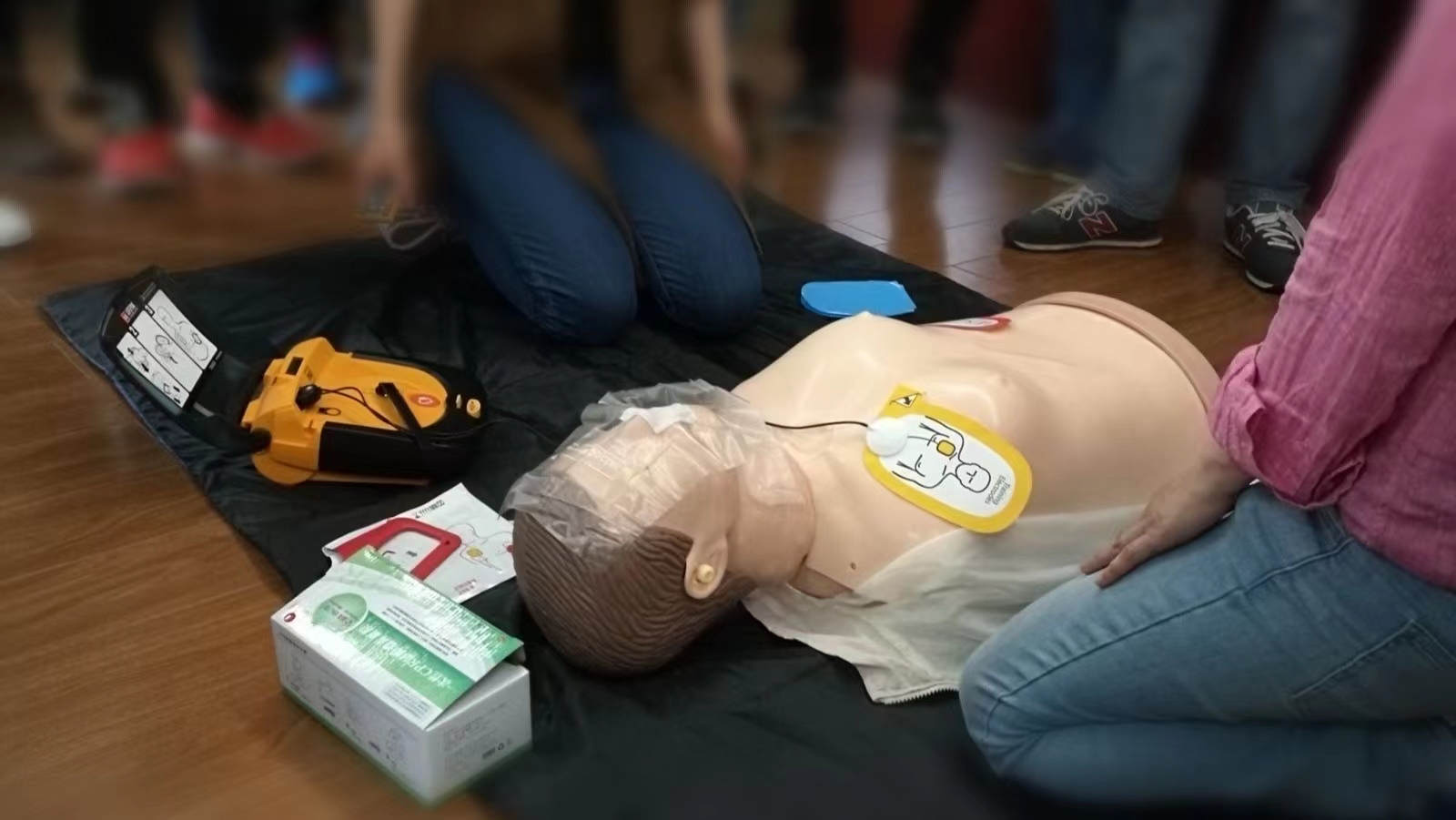Notes of CPR from a First Aid Training
成人心肺复苏(CPR)学习笔记
I attended a two-day first aid training last weekend. I am quite interested in saving the injured and giving help; Even in the game World of Warcraft, I play a healing class in - Priest.
The first aid training actually covered a lot of topics, including the general management of burns, cuts, and choking, but more important to me was adult CPR and the use of AEDs. I present in this article what I have learned about CPR.
One of the things that prompted me to take this training was my experience at a recent half marathon. Last month year I participated in the Shanghai Half Marathon and saw quite a few runners in need of help. It was quite hot and sunny on the day of the race and I saw quite a few runners collapse unconscious before and after me near the finish line and then someone went to their aid. I wanted to help but my heart rate was high that day and I was not in a healthy state and did not have first aid knowledge to help. One of my fellow marathon runners knew about my idea and recommended this first-aid training to me. Half of the members who attended the training must have been marathon runners, and probably all came with the intention of saving others and saving themselves.

CPR Notes
In the event of someone collapsing, we need to do the following:
- Ensure the safety of the injured or sick person and ourselves
- Make sure the surroundings are free from danger
- Make sure you are protecting yourself well, e.g. wear gloves if you can
- Determine the person's consciousness and breathing
- Tap the casualty on both shoulders
- Call out loudly in both ears
- Look for any rise or fall of the chest
- Call for help
- Call for help from the surrounding area: "Someone's fainted, I'm an ambulanceman"
- Designate people in the vicinity to call the emergency services and look for an AED
- Find other people with first aid knowledge to help
- Position the sick or injured person
- In the supine position 2.Choose a flat, safe, hard surface
- Check for a pulse
- Touch the carotid artery
- Pinch the watch or use the four-digit method to determine the time
- Confirm the need for CPR if the casualty is
- Unresponsive
- Not breathing
- Not heart beating
- Confirm that the airway is open
- Check if there is something blocking the mouth and remove it from the side of the head
- Confirm chest compressions
- Undo the casualty's clothing
- Position at mid-chest, nipple line level
- Chest compressions
- Hand posture: overlap the palms of both hands, interlocking the fingers and lifting the palms
- Body posture: shoulder, elbow, and wrist joints perpendicular to the ground, upper body leaning forward
- Pressing posture: Press vertically downwards with the hip joint as the axis
- Pressing frequency: 100-120 presses/min, 30 presses
- Depth of compression: at least 5 cm
- Mouth-to-mouth blowing
- Opening the airway: Press the little finger of one hand against the patient's forehead, hold the patient's jaw with the middle finger and index finger together and gently open the airway by 90°.
- Prepare to blow: Inhale, open the mouth wide and wrap the lips of the patient's mouth tightly
- Blowing: pinch the casualty's nose and blow for 1 second, observe the chest bulge
- Cycle: 30 compressions and 2 breaths for 1 cycle, continue for 5 cycles
- Observe breathing, post-resuscitation care
- If resuscitation is successful, help the casualty wear clothes
- Otherwise repeat the compressions and blowing cycle
Use the AED
- Turn on the power and listen to the voice prompts
- Apply electrode pads, one to the left mid-axillary line, next to the left nipple, the other to the right side, under the clavicle, at the edge of the sternum; there will be an image on the electrode pads
- The instrument operates automatically, detects the heart rate, determines the situation and then defibrillates automatically; do not touch the patient during this process
- If the heart rate is not restored after one defibrillation, continue after 5 cycles of CPR
Fun Fact
While talking to marathon runners, I learned that there is an organization in Shanghai called Be Your Eyes, which is dedicated to assisting visually impaired runners in marathon races. During the race, a guide will pull the visually impaired runner by a rope to help them finish the race - very rewarding.

Be Your Eyes has a quote in its promotion that I think is not only appropriate for guiding visually impaired runners, but also for every second and every step in first aid - "Kindness is emotional, but the way it is delivered needs to be rational".